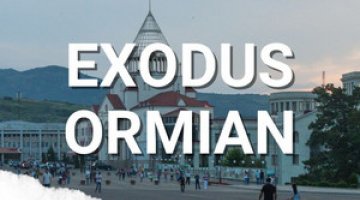The constitutional referendum in Armenia: the institutionalisation of the oligarchy
On 6 December a referendum on amendments to the Constitution was held in Armenia. 63.3% of voters were in favour of the amendments (with a turnout of 50.5%). The referendum was only monitored by representatives of CIS countries. According to the opposition, the government falsified the results and overestimated the turnout; on 6 and 7 December the opposition held demonstrations in Yerevan, but only a few hundred people attended.
The amendments will change the Armenian political system from a presidential to a parliamentary constitution. This will weaken the position of the president, who is to be elected for a seven-year term by parliament, and not, as now, in general elections. His functions have been severely curtailed, to the benefit of parliament (including the appointment of judges) and the head of government, whose competences will now include serving as head of the armed forces. The changes also apply to parliament: the number of deputies will be reduced from 131 to 101, and they will all be elected by proportional representation (as of now 41 have been elected in single-mandate constituencies). The opposition protested against the amendments as, in its view, they will consolidate power in the hands of the Republican Party of Armenia (including by the introduction of a clause which allows new elections to be called if the largest party does not win a ‘stable majority’). It was also noted that some of the changes will negatively affect human rights (restriction of freedom of religion in case of a threat to national security).
Commentary
- Everything indicates that the vote was not held according to democratic standards. This is confirmed by reports from the opposition and non-governmental organisations (including mass vote fraud, vote-buying and abuse of administrative resources), as well as by well-reported violations of electoral law during the elections, the lack of independent observers, and the prevailing social apathy in Armenia (the referendum did not interest the general public). Thus, the referendum has provided only a weak mandate to amend the constitution.
- Paradoxically, changing the constitution will preserve the political system in Armenia, a classic oligarchic system which arose after the end of the active phase of the Karabakh War (1994). The Republican Party of Armenia, which has monopolised power under President Serzh Sargsyan (in office since 2008) is an emanation of the oligarchic-bureaucratic establishment that controls the country’s political and economic life. The amendments will consolidate the system, limiting the opposition’s activities and the risk of uncontrollable political processes, both of which had been caused by presidential elections. The short-term objective of the changes is to keep Sargsyan in power (as prime minister); his second presidential term expires in 2018.
- The political changes and the weakness of the opposition, which has been unable to generate an alternative program, mean that the risks of anti-system disturbances in Armenia (for example, in the form of mass demonstrations against social policy, which have already taken place recently) and resorting to unconstitutional political methods (such as terrorism) are rising. These risks are high due to the general public’s poor standard of livingand the potential impact of external factors (such as the possibility that Russia will impose a resolution to the Nagorno-Karabakh conflict on Baku and Yerevan, one element of which would have to be Armenian concessions to Azerbaijan, e.g. returning part of the territories it has occupied).




